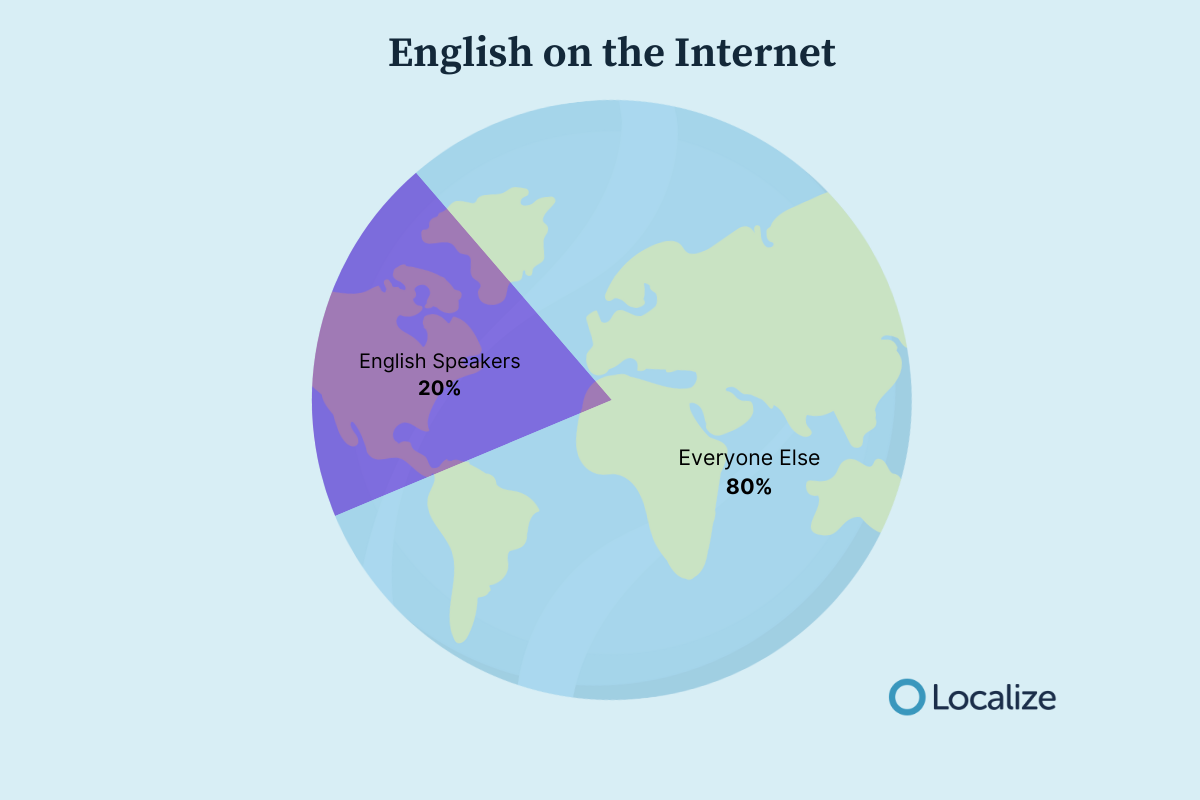Discover the key differences between translation and localization, why both are crucial for global market success, and how to effectively adapt your content for different cultures. Learn more with our comprehensive guide on translation vs localization.


Crafting content for an international audience requires creativity.
While translation plays a vital role in garnering attention for your global website, product, or service, it’s not always enough. You may also need to localize to keep content culturally relevant.
But wait a minute...aren't translation and localization the same thing? Nope! Let’s take a closer look at the differences, explore examples of localization vs translation, and find out how they can help you reach your business goals.

Translation is the process of converting the written word from one language into another.
A translation project typically involves translators or language service providers (LSPs) who transform the content using their expertise. Translation requires a certain set of skills and often includes the use of a glossary and style guide to maintain the integrity of the translation. With the advancement of LLM technology, many companies supplement with AI translation.
Many global companies translate their online help centers so international customers can get support. For example, Google's help website is translated into dozens of different languages.
Here are the Urdu-language and American English versions of support.google.com. You'll probably notice that the websites look the same, aside from the language and text direction.


Noticing low downloads in Arabic-speaking regions, mobile developer Carry1st partnered with Localize to translate their website, leading to a surge in downloads from Egypt and Sudan.
This example is a true translation, rather than a localization, since the only significant difference between the Arabic and English versions is the language.


According to estimates, 63% of all websites use English. English is a common world language, but not as common as you’d think.
Research shows that only 20% of people worldwide can speak and read English. What about the other 80%? They need website translations. As internet connections and mobile networks continue to grow stronger worldwide, there’s a significant gap in the market for translated websites.

In fact, English is losing its dominance as the default language of the internet worldwide. The demand for different languages is growing strong. Translating your site can expand your online presence and attract new international customers. If you’re not sure where to start, read about the top 10 best languages for website translation.
When translating different languages, it’s important to hire a skilled professional translation agency or LSP (language service provider) with expertise in the native language of your target audience. Literal, word-for-word translations and free AI translations are often full of mistakes.
To avoid mistranslations, it’s crucial to have AI-translated content professionally post-edited. However, even if a qualified translator reviews your content, it may still lack the cultural awareness necessary to effectively resonate with a specific locale. That’s where localization can help.
Localization is the process of adapting a product or service to a specific target audience. While translation is about the words you use, localization is more about how well your product fits in with people in a different culture.
Localized content is translated and adapted based on the target audience's culture. That means, in addition to language translation, localization can include color scheme changes, layout differences, unique images, expanded product offerings, and more.
Sneaker retailer Nike sells their products in over 160 countries, so good localization is incredibly important. Upon entering the website, Nike's visitors can select their geographic location.

In the screenshot below, we've selected China. Notice how different Nike's Chinese homepage looks compared to the American site. Not only do the languages differ, the Chinese site has a different color scheme, culturally-appropriate models, and a unique design.


Recently, the social platform Reddit expanded internationally by localizing its entire website into multiple languages. All Reddit pages, communities, and forums were translated into 13 languages, with more to come.
With the tap of a button, users can translate their entire feed, including posts and comments, and participate in conversations in their own language. Local moderators also play a critical role in curating content that reflects regional interests, humor, and preferences. The investment has paid off so far, with revenues outside of the US surging 82%.

Language translation is only one piece of the localization puzzle. Successful localization helps your new global audience feel that your product was designed specifically for them.
Apple is a great example of localization done well. In the early 2000s, Apple battled Microsoft for market share in the US. In a series of “Get a Mac” TV ads, Apple bashed Microsoft’s stuffy corporate image and highlighted the sleek appeal of Mac computers. For American audiences, the Mac vs. PC message was effective, leading to a 39% sales increase for Mac.
As Apple expanded into new markets like Japan, they could have easily done a word-for-word translation of the American ad spots. But they didn’t. Why? Because they knew how to localize.
Apple understood that in some cultures (Japan, Germany, and more), locals hated harsh competitor put-downs in advertising. Instead of translation, Apple used transcreation to craft a friendlier, localized marketing message for the Japanese market. In this case, Apple hired two local comedians to show how fun and unique Apple products could be.
Beyond making clever campaigns to get new international customers, you should also localize your websites, apps, e-commerce sites, and digital products. It’s important to localize the entire customer experience. From signup forms to checkout pages, consider the international customer’s needs from their perspective. Conduct research and testing to determine what people in a specific region expect from you.
Need some localization inspiration? You can localize almost anything: web content, mobile apps, software, applications, and files. To see a few examples of effective localization in multiple industries, check out our Localization Guide.
So, how do you know when to translate versus localize, and vice versa?
Choose translation if:
Translation is a great first step to entering global markets, especially when you need to scale fast.
Choose localization if:
Localization is ideal when your international success depends on how relatable and relevant you feel to users.
Whether you’re a SaaS founder or a tech giant like Apple, localization and translation can help you grow your audience in different countries. Localized content can boost your bottom line, too. Companies of all sizes can gain new customers and stay competitive by translating their content for new global markets.
Website localization is an investment, but when it’s done thoughtfully, it’s one of the smartest growth moves you can make. Before you launch into new markets, it pays to invest in a trusted translation management system (TMS) that integrates with skilled translators and LSPs. A good TMS makes it easy to build localization into your marketing strategy.
Localize is a full-service TMS with high-quality, accurate translation in dozens of language pairs. We combine cutting-edge AI translation with human post-editing to ensure you get fantastic results every time. Plus, our tools automate your workflows to keep all your international content effortlessly up-to-date.
To learn more about how we help hundreds of top brands like Cisco, Canva, and Microsoft reach their global audience, contact us anytime.

At Localize, our passionate writers — including Marketing Manager Rod Austin — explore a wide range of localization topics, from technology trends to cultural insights. With diverse backgrounds in SaaS, marketing, and global growth, they bring unique perspectives to their articles, aiming to inform and inspire readers worldwide.
Transform your event management journey from concept to analysis with Releventful. Elevate each step with our comprehensive tools designed for unforgettable event experiences.
Explore our features now!